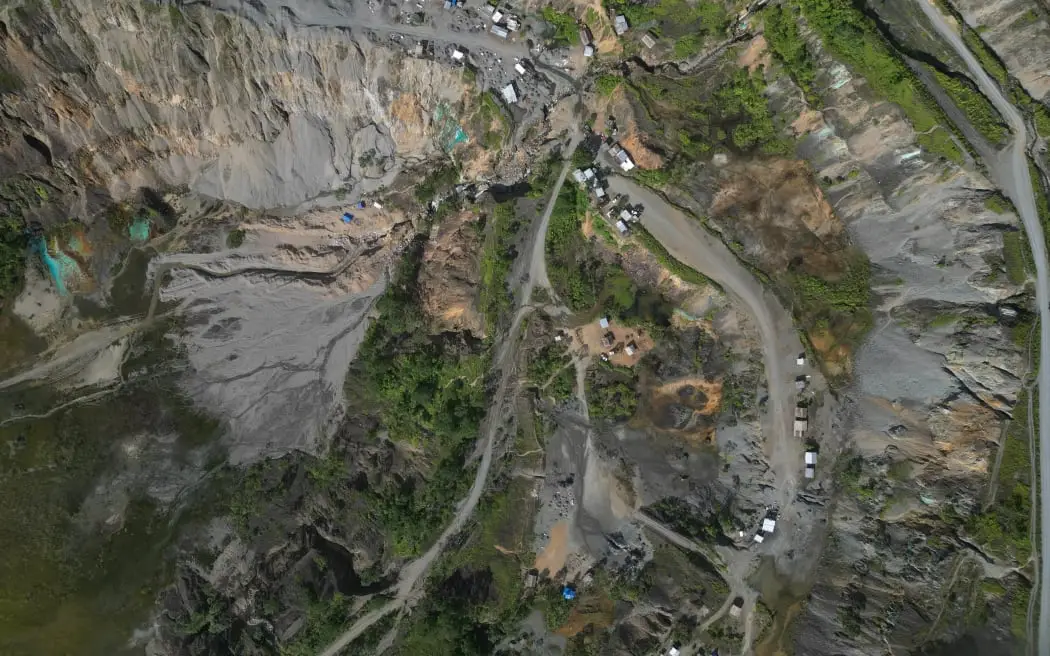The Devastating Legacy of the Panguna Gold Mine in Papua New Guinea
The troubled Panguna gold mine in the autonomous region of Bougainville, Papua New Guinea, has left behind an environmental disaster and a legacy of human rights abuses that continues to impact local communities today.
The History of the Panguna Mine
Panguna was one of the world’s largest copper and gold mines, operating between 1972 and 1989. During its operation, close to a billion tonnes of mine waste were directly released into the Jaba-Kawerong river. The environmental devastation that ensued, along with inequities in the distribution of mine profits, led to an uprising by local people, forcing the mine to stop operating and triggering a brutal, decade-long civil war.
The Investigation
In 2021, Rio Tinto agreed to fund the Panguna Mine Legacy Impact Assessment, a two-year investigation into the ongoing impacts of the mine on local communities. The report was undertaken by environmental firm Tetra Tech Coffey and focused on the most serious areas of concern to communities.
Findings
The report identified serious impacts in all mine-affected domains, including:
* Imminent, life-threatening risks posed by the collapsing mine pit, levees, and infrastructure
* Ongoing contamination of the Jaba-Kawerong river and movement of mine waste down the rivers into new areas
* Flooding of communities’ gardens and sacred places
* Risk to children’s lives as they attempt to cross rivers filled with mine waste
Community Demands for Remediation
The report validated what communities in Bougainville have been saying for decades. The community demands that Rio Tinto take swift action to address the life-threatening risks and provide long-term solutions.
“The Legacy Impact Assessment has given us data and laid a foundation for solutions,” said Theonila Roka Matbob, lead complainant and member of parliament for the Ioro constituency where the mine is located. “What we are waiting for is a commitment to remediation.”
The community is calling on Rio Tinto to:
* Contribute to a substantial, independently managed fund to help address the harms caused by the mine and assist long-term rehabilitation efforts
* Undertake formal reconciliation as per Bougainvillean custom
* Prioritize areas of acute need and serious public safety risks in their remediation plans
A Defining Moment for Rio Tinto
Human Rights Law Centre’s legal director Keren Adams said the report highlights a range of life-threatening risks to communities, which must be addressed urgently. “Children need to be able to walk to school without wading through areas of treacherous quicksand created by mine waste. Communities need to be able to live without the fear of collapsing levees or their homes or food gardens being flooded with mine waste.”
The report marks a critical moment for Rio Tinto’s social license to operate. The company has a chance to demonstrate that it is serious about meeting its human rights and environmental obligations and committing to remediation.
In conclusion, the Panguna gold mine’s legacy in Papua New Guinea serves as a stark reminder of the devastating consequences of extractive industries on local communities. Rio Tinto must take immediate action to address the ongoing impacts of the mine and provide long-term solutions to ensure that affected communities can live safely and without fear of exploitation.
The future of the Panguna mine, and more broadly, the lives of the people affected by it, depends on the company’s willingness to acknowledge its past mistakes and commit to a better future.

0 Comments